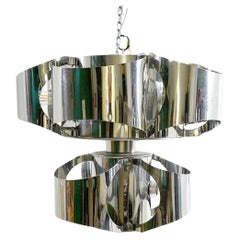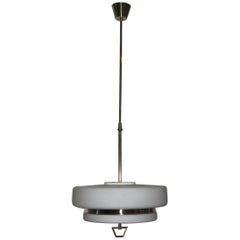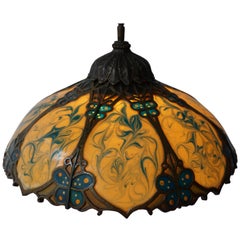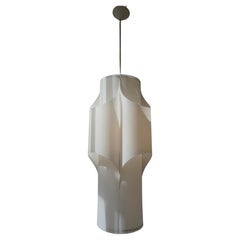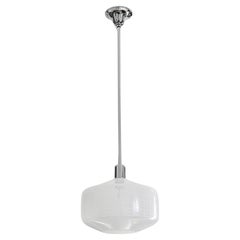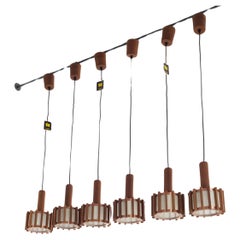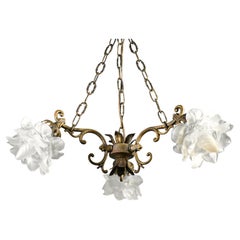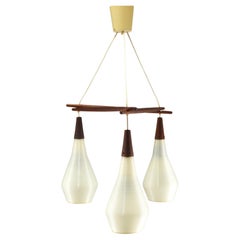Mid Century Ceiling
Vintage 1960s Chandeliers and Pendants
Aluminum
Vintage 1950s Italian Mid-Century Modern Chandeliers and Pendants
Brass
Mid-20th Century Italian Mid-Century Modern Chandeliers and Pendants
Brass
Mid-20th Century European Mid-Century Modern Chandeliers and Pendants
Metal
Vintage 1950s French Mid-Century Modern Chandeliers and Pendants
Metal, Brass
Mid-20th Century French Mid-Century Modern Chandeliers and Pendants
Chrome
Vintage 1960s Danish Mid-Century Modern Chandeliers and Pendants
Copper
Mid-20th Century French Mid-Century Modern Chandeliers and Pendants
Metal
Vintage 1960s German Mid-Century Modern Chandeliers and Pendants
Teak
Antique 1660s German Mid-Century Modern Flush Mount
Metal
Vintage 1960s Czech Mid-Century Modern Chandeliers and Pendants
Chrome
Vintage 1960s German Mid-Century Modern Chandeliers and Pendants
Metal, Silver Plate
Vintage 1960s Italian Mid-Century Modern Chandeliers and Pendants
Brass
Vintage 1960s European Mid-Century Modern Wall Lights and Sconces
Metal
Vintage 1950s Brazilian Mid-Century Modern Chandeliers and Pendants
Opal, Aluminum, Brass
Vintage 1960s Swedish Mid-Century Modern Chandeliers and Pendants
Metal
Vintage 1970s Czech Mid-Century Modern Wall Lights and Sconces
Glass
Vintage 1970s Czech Mid-Century Modern Wall Lights and Sconces
Glass
Vintage 1950s German Mid-Century Modern Chandeliers and Pendants
Metal
Vintage 1960s Spanish Hollywood Regency Flush Mount
Metal
20th Century Finnish Mid-Century Modern Chandeliers and Pendants
Aluminum
Vintage 1950s Scandinavian Mid-Century Modern Chandeliers and Pendants
Chrome
Vintage 1950s Scandinavian Mid-Century Modern Chandeliers and Pendants
Brass
Vintage 1950s Scandinavian Mid-Century Modern Chandeliers and Pendants
Brass
Vintage 1970s Czech Mid-Century Modern Chandeliers and Pendants
Steel
Vintage 1960s Scandinavian Mid-Century Modern Chandeliers and Pendants
Brass, Metal
Vintage 1970s Finnish Mid-Century Modern Chandeliers and Pendants
Opaline Glass, Plastic
Vintage 1960s Scandinavian Mid-Century Modern Chandeliers and Pendants
Brass
Vintage 1970s Czech Mid-Century Modern Wall Lights and Sconces
Metal
Vintage 1970s Czech Mid-Century Modern Wall Lights and Sconces
Metal
Vintage 1970s Czech Mid-Century Modern Wall Lights and Sconces
Metal
Vintage 1960s Czech Mid-Century Modern Wall Lights and Sconces
Glass, Wood
Vintage 1960s Finnish Mid-Century Modern Chandeliers and Pendants
Brass, Steel
Vintage 1970s Czech Mid-Century Modern Wall Lights and Sconces
Metal
Vintage 1960s Czech Mid-Century Modern Wall Lights and Sconces
Glass, Plastic
Vintage 1960s Scandinavian Mid-Century Modern Chandeliers and Pendants
Brass
Vintage 1970s Czech Mid-Century Modern Wall Lights and Sconces
Metal
Vintage 1970s Czech Mid-Century Modern Wall Lights and Sconces
Metal
Vintage 1970s Czech Mid-Century Modern Wall Lights and Sconces
Milk Glass, Bakelite
Vintage 1960s Norwegian Mid-Century Modern Chandeliers and Pendants
Copper, Steel
Vintage 1960s Norwegian Mid-Century Modern Chandeliers and Pendants
Copper, Steel
Vintage 1970s Czech Mid-Century Modern Wall Lights and Sconces
Glass
Vintage 1970s Danish Mid-Century Modern Chandeliers and Pendants
Copper
Vintage 1970s Czech Mid-Century Modern Chandeliers and Pendants
Metal
Vintage 1940s Swedish Scandinavian Modern Chandeliers and Pendants
Brass
Mid-20th Century Italian Mid-Century Modern Chandeliers and Pendants
Metal, Brass
Vintage 1950s Scandinavian Mid-Century Modern Chandeliers and Pendants
Metal, Brass
Mid-20th Century Italian Mid-Century Modern Chandeliers and Pendants
Aluminum
Vintage 1960s Czech Mid-Century Modern Chandeliers and Pendants
Brass
Vintage 1970s Danish Mid-Century Modern Chandeliers and Pendants
Brass
Vintage 1950s Brazilian Mid-Century Modern Chandeliers and Pendants
Brass
Vintage 1970s German Mid-Century Modern Flush Mount
Metal, Brass
Vintage 1970s German Mid-Century Modern Flush Mount
Glass
Vintage 1950s Italian Mid-Century Modern Chandeliers and Pendants
Brass
Vintage 1960s Norwegian Mid-Century Modern Chandeliers and Pendants
Aluminum
Vintage 1970s German Mid-Century Modern Flush Mount
Brass
Vintage 1970s Danish Mid-Century Modern Wall Lights and Sconces
Brass
Vintage 1970s Czech Mid-Century Modern Wall Lights and Sconces
Metal
Vintage 1970s Italian Mid-Century Modern Flush Mount
Metal
2010s British Art Deco Wall Mirrors
Nickel
- 1
- ...
Mid Century Ceiling For Sale on 1stDibs
How Much is a Mid Century Ceiling?
A Close Look at Mid-Century Modern Furniture
Organically shaped, clean-lined and elegantly simple are three terms that well describe vintage mid-century modern furniture. The style, which emerged primarily in the years following World War II, is characterized by pieces that were conceived and made in an energetic, optimistic spirit by creators who believed that good design was an essential part of good living.
ORIGINS OF MID-CENTURY MODERN FURNITURE DESIGN
- Emerged during the mid-20th century
- Informed by European modernism, Bauhaus, International style, Scandinavian modernism and Frank Lloyd Wright’s architecture
- A heyday of innovation in postwar America
- Experimentation with new ideas, new materials and new forms flourished in Scandinavia, Italy, the former Czechoslovakia and elsewhere in Europe
CHARACTERISTICS OF MID-CENTURY MODERN FURNITURE DESIGN
- Simplicity, organic forms, clean lines
- A blend of neutral and bold Pop art colors
- Use of natural and man-made materials — alluring woods such as teak, rosewood and oak; steel, fiberglass and molded plywood
- Light-filled spaces with colorful upholstery
- Glass walls and an emphasis on the outdoors
- Promotion of functionality
MID-CENTURY MODERN FURNITURE DESIGNERS TO KNOW
- Charles and Ray Eames
- Eero Saarinen
- Milo Baughman
- Florence Knoll
- Harry Bertoia
- Isamu Noguchi
- George Nelson
- Danish modernists Hans Wegner and Arne Jacobsen, whose emphasis on natural materials and craftsmanship influenced American designers and vice versa
ICONIC MID-CENTURY MODERN FURNITURE DESIGNS
- Eames lounge chair
- Nelson daybed
- Florence Knoll sofa
- Egg chair
- Womb chair
- Noguchi coffee table
- Barcelona chair
VINTAGE MID-CENTURY MODERN FURNITURE ON 1STDIBS
The mid-century modern era saw leagues of postwar American architects and designers animated by new ideas and new technology. The lean, functionalist International-style architecture of Le Corbusier and Bauhaus eminences Ludwig Mies van der Rohe and Walter Gropius had been promoted in the United States during the 1930s by Philip Johnson and others. New building techniques, such as “post-and-beam” construction, allowed the International-style schemes to be realized on a small scale in open-plan houses with long walls of glass.
Materials developed for wartime use became available for domestic goods and were incorporated into mid-century modern furniture designs. Charles and Ray Eames and Eero Saarinen, who had experimented extensively with molded plywood, eagerly embraced fiberglass for pieces such as the La Chaise and the Womb chair, respectively.
Architect, writer and designer George Nelson created with his team shades for the Bubble lamp using a new translucent polymer skin and, as design director at Herman Miller, recruited the Eameses, Alexander Girard and others for projects at the legendary Michigan furniture manufacturer.
Harry Bertoia and Isamu Noguchi devised chairs and tables built of wire mesh and wire struts. Materials were repurposed too: The Danish-born designer Jens Risom created a line of chairs using surplus parachute straps for webbed seats and backrests.
The Risom lounge chair was among the first pieces of furniture commissioned and produced by legendary manufacturer Knoll, a chief influencer in the rise of modern design in the United States, thanks to the work of Florence Knoll, the pioneering architect and designer who made the firm a leader in its field. The seating that Knoll created for office spaces — as well as pieces designed by Florence initially for commercial clients — soon became desirable for the home.
As the demand for casual, uncluttered furnishings grew, more mid-century furniture designers caught the spirit.
Classically oriented creators such as Edward Wormley, house designer for Dunbar Inc., offered such pieces as the sinuous Listen to Me chaise; the British expatriate T.H. Robsjohn-Gibbings switched gears, creating items such as the tiered, biomorphic Mesa table. There were Young Turks such as Paul McCobb, who designed holistic groups of sleek, blond wood furniture, and Milo Baughman, who espoused a West Coast aesthetic in minimalist teak dining tables and lushly upholstered chairs and sofas with angular steel frames.
As the collection of vintage mid-century modern chairs, dressers, coffee tables and other furniture for the living room, dining room, bedroom and elsewhere on 1stDibs demonstrates, this period saw one of the most delightful and dramatic flowerings of creativity in design history.
Finding the Right Lighting for You
The right table lamp, outwardly sculptural chandelier or understated wall pendant can work wonders for your home. While we’re indebted to thinkers like Thomas Edison for critically important advancements in lighting and electricity, we’re still finding new ways to customize illumination to fit our personal spaces all these years later. A wide range of antique and vintage lighting can be found on 1stDibs.
Today, lighting designers like the self-taught Bec Brittain have used the flexible structure of LEDs to craft glamorous solutions by working with what is typically considered a harsh lighting source. By integrating glass and mirrors, reflection can be used to soften the glow from LEDs and warmly welcome light into any space.
Although contemporary innovators continue to impress, some of the classics can’t be beat.
Just as gazing at the stars allows you to glimpse the universe’s past, vintage chandeliers like those designed by Gino Sarfatti and J. & L. Lobmeyr, for example, put on a similarly stunning show, each with a rich story to tell.
As dazzling as it is, the Arco lamp, on the other hand, prioritizes functionality — it’s wholly mobile, no drilling required. Designed in 1962 by architect-product designers Achille & Pier Giacomo Castiglioni, the piece takes the traditional form of a streetlamp and creates an elegant, arching floor fixture for at-home use.
There is no shortage of modernist lighting similarly prized by collectors and casual enthusiasts alike — there are Art Deco table lamps created in a universally appreciated style, the Tripod floor lamp by T.H. Robsjohn-Gibbings, Greta Magnusson Grossman's sleek and minimalist Grasshopper lamps and, of course, the wealth of mid-century experimental lighting that emerged from Italian artisans at Arredoluce, FLOS and many more are hallmarks in illumination innovation.
With decades of design evolution behind it, home lighting is no longer just practical. Crystalline shaping by designers like Gabriel Scott turns every lighting apparatus into a luxury accessory. A new installation doesn’t merely showcase a space; carefully chosen ceiling lights, table lamps and floor lamps can create a mood, spotlight a favorite piece or highlight your unique personality.
The sparkle that your space has been missing is waiting for you amid the growing collection of antique, vintage and contemporary lighting for sale on 1stDibs.
- 1stDibs ExpertFebruary 27, 2024The difference between mid-century and mid-century modern comes down to specificity. When it comes to furniture and architecture, for example, mid-century refers to works that emerged during the middle of the 20th century, usually between 1950 and 1970. The more specific descriptor, mid-century modern, is used to refer to a particular style of design that emphasizes simplicity, organic forms and clean lines. Mid-century modern furniture designers generally drew on the architectural work of Frank Lloyd Wright, Bauhaus design, Scandinavian modernism and more. Any piece of furniture produced during the 1950s and ’60s can be referred to as mid-century, but only those with specific characteristics are mid-century modern. That said, when enthusiasts of furniture and architecture use the shorter of the two phrases, they may indeed be referring to modernist works created during that period in history. On 1stDibs, find a wide variety of mid-century modern furniture.
- What is a mid-century sofa?1 Answer1stDibs ExpertOctober 26, 2021A mid-century sofa is any sofa created during the mid-20th century. Mid-century modern sofas are pieces of seating furniture that embody the venturesome attributes that we associate with mid-century modern furniture — while not all sofas designed in the mid-century modern style are the same, they frequently have a low profile and are characterized by gentle curves, clean lines and an organic shape. Mid-century furniture is a timeless classic due to its elegant simplicity. Shop a collection of antique, vintage, and contemporary mid-century sofas from some of the world’s top dealers on 1stDibs.
- Are the 1970s mid-century?1 Answer1stDibs ExpertFebruary 17, 2023No, the 1970s are generally not considered to fall within the era identified as mid-century. With respect to mid-century modern design, while there is some debate between collectors and design experts about the specific time period that saw the emergence of the style, most furniture enthusiasts agree that by the late 1960s, interest in MCM had largely declined. Writer Cara Greenberg, who coined the term “mid-century modernism,” suggests that “the period from the end of World War II to 1960 – from V-J Day to JFK – was the heyday of innovative furniture design in America.” Mid-century modern furniture is characterized by clean lines and inviting, organic shapes. Furniture makers of the era believed that good design was an essential part of good living. Find a variety of vintage mid-century modern furniture and decorative objects on 1stDibs.
- What is mid-century artwork?1 Answer1stDibs ExpertApril 5, 2022Mid-century artwork is any piece of art produced during the middle of the 20th century. It includes paintings, drawings, prints, sculptures, collages, pottery and other media. You'll find a large selection of mid-century artwork from some of the world’s top sellers on 1stDibs.
- What is mid century decor?1 Answer1stDibs ExpertFebruary 22, 2021Mid-century modern decor was popularized during the period of 1933 to 1965 but most would suggest that the style emerged during the years that followed World War II. This style of decor is typically characterized by sleek lines, organic forms, minimal ornamentation and high functionality. Find the finest mid-century modern furnishings and more on 1stDibs.
- What is mid century furniture?1 Answer1stDibs ExpertFebruary 22, 2021Mid-century furniture is furniture created within the period of 1933 to 1965 but most would argue that the style began to emerge in the postwar years. This style of furniture is known for its sleek lines and organic shapes. The creators most frequently associated with mid-century modern furniture believed that good design meant good living. Mid-century modern is today by far the largest category of furnishings on 1stDibs.
- What is mid-century jewelry?1 Answer1stDibs ExpertApril 5, 2022Mid-century jewelry is a style of jewelry that rose in popularity along with the mid-century modern design movement. Pieces from this era typically feature bold, geometric designs. Shop a variety of mid-century jewelry and accessories from some of the world’s top dealers on 1stDibs.
- What does mid century mean?1 Answer1stDibs ExpertFebruary 22, 2021The mid-century modern style emerged primarily in the years following World War II. This style of decor is characterized by sleek lines, organic forms, minimal ornamentation and high functionality. Creators of mid-century modern furniture believed that good design meant good living, and mid-century modern is today by far the largest category of furnishings on 1stDibs.
- What is a mid-century chair?1 Answer1stDibs ExpertOctober 19, 2021A mid-century chair is a piece of seating furniture that was designed at any point during the middle of the 20th century. Mid-century modern furniture is characterized by pieces that were conceived and made in an energetic, optimistic spirit by creators who believed that good design was an essential part of good living. The mid-century period provided an excellent opportunity to experiment with both functional and decorative forms. Mid-century modern chairs were made with a variety of natural and synthetic materials, combining leather, wood, and cane with chrome, steel, and plastic. Shop a range of vintage mid-century chairs on 1stDibs today.
- 1stDibs ExpertFebruary 22, 2021Mid century modern refers to the middle of the 20th century — specifically 1930s through the mid-1960s. This period represents a design and architecture movement characterized by simple shapes, clean lines, and organic materials. Some of the most famous mid century modern designers include Ray Eames, Charlotte Perriand, Isamu Noguchi and Eero Saarinen.
- 1stDibs ExpertMay 22, 2019
Mid-century modernism first appeared in 1945 and merged a minimalist aesthetic with practicality. Mid-century modern furniture is distinguishable by its lack of decoration or extravagance and its use of clean lines, organic curves and variety of natural materials.
1stDibs ExpertFebruary 22, 2021Mid century modern furniture refers to pieces designed during the middle of the 20th century — specifically 1930s through the mid-1960s. This period represents a design and architecture movement characterized by simple shapes, clean lines, and organic materials. Some of the most famous mid century modern designers include Ray Eames, Charlotte Perriand, Isamu Noguchi and Eero Saarinen. - 1stDibs ExpertMay 3, 2024The years between 1950 and 1960 are typically considered mid-century. Some people also include the 1970s in the definition. Remember that the term mid-century furniture refers to pieces produced during the middle of the 20th century. It is different from mid-century modern, the name for a furniture style that emerged primarily in the years following World War II and is characterized by pieces that were conceived and made in an energetic, optimistic spirit by creators who believed that good design was an essential part of good living. On 1stDibs, shop a variety of mid-century furniture.
- Is Eames mid-century modern?1 Answer1stDibs ExpertFebruary 13, 2024Yes, Eames is mid-century modern. In many ways, Charles Eames and Ray Eames were the embodiment of the inventiveness, energy and optimism at the heart of mid-century modern American design, and they have been recognized as the most influential designers of the 20th century. Some of the couple's most famous mid-century modern designs include the Eames Lounge chair and ottoman, the Eames Molded Plywood chair and the Eames Fiberglass chair. Shop a wide range of Charles and Ray Eames furniture on 1stDibs.
- 1stDibs ExpertApril 25, 2024The years that encompass the mid-century modern period are roughly 1933 until 1965, but most experts argue, however, that the mid-century modern era correlates specifically to the years following World War II. These years in America saw one of the most delightful and dramatic flowerings of creativity in design history. Vintage mid-century modern furniture — including tables, chairs, desks and case pieces — are often organically shaped, clean-lined and elegantly simple.
Postwar architects and designers in the United States were animated by new ideas and new technology during the era of mid-century modernism. Materials developed for wartime use became available for domestic goods and were incorporated into mid-century furniture designs manufactured by the likes of Knoll and Herman Miller.
Charles and Ray Eames and Eero Saarinen, who had experimented extensively with molded plywood, eagerly embraced fiberglass for pieces such as the La Chaise and the Womb chair, respectively.
Knoll became a chief influencer in the rise of modern design in the United States, thanks to the work of Florence Knoll, the pioneering architect and designer who made the firm a leader in its field. The seating that Knoll created for office spaces soon became desirable for the home. Similarly, Michigan’s Herman Miller is best known for its iconic mid-century modern furniture, and while the company focused on the office, people loved its designs for their homes, too.
Find vintage mid-century modern furniture for sale on 1stDibs. - 1stDibs ExpertMay 5, 2023To tell if a chair is mid-century, look for labels and markings that indicate its maker. Then, use trusted online resources to determine when the company was active. A certified appraiser or experienced antiques dealer can be of assistance when dating chairs. Iconic mid-century modern furniture designers include Charles and Ray Eames, Eero Saarinen, Milo Baughman, Florence Knoll, Harry Bertoia and Isamu Noguchi. Find a variety of mid-century modern chairs on 1stDibs.
- 1stDibs ExpertMay 5, 2023To tell if furniture is mid-century modern, examine the piece, looking for labels and markings that indicate who produced it. Then, consult trusted online resources to determine when the maker was active and what styles of furniture they made. Iconic mid-century modern furniture designers include Charles and Ray Eames, Eero Saarinen, Milo Baughman, Florence Knoll, Harry Bertoia and Isamu Noguchi. A knowledgeable dealer or certified appraiser can help you determine if a particular piece is genuine mid-century modern or a reproduction. Shop a range of mid-century modern furniture on 1stDibs.
- Is rattan mid-century modern?1 Answer1stDibs ExpertMarch 13, 2024Yes, some rattan is mid-century modern. Designers of the mid-century modern movement often preferred to use natural materials, including rattan, in their designs. However, not all rattan furniture was made during this period. Rattan was also a popular material for furniture produced during the Victorian era and continues to be used to produce furniture today. Shop a wide range of rattan furniture on 1stDibs.
- Is Mondrian mid century modern?1 Answer1stDibs ExpertApril 5, 2022Yes, Mondrian’s art is believed to be one of the great inspirations for the mid-century modern approach to minimalism. His artworks were not just a departure from figurative works, but a new look at abstract art as well. On 1stDibs, find a variety of original artwork from top artists.
- 1stDibs ExpertFebruary 13, 2023To identify mid-century lamps, look for a manufacturer's label or stamp on the base or the shade. You can use trusted online resources to determine when the company or artisan was active. Some lamps may also have a date stamp that you can use for identification purposes. Pieces dating from the late 1950s through the early 1970s are mid-century in terms of their age. A mid-century modern lamp will show off hallmarks of the design style, such as curvy hourglass or globe forms. A certified appraiser or experienced antiques dealer may also be able to help with the identification. Find a range of mid-century lamps on 1stDibs.
- 1stDibs ExpertApril 5, 2022Mid-century is considered the middle of the century, however as it pertains to furniture and design, mid-century is an American design movement known for its modern style, construction and the Modernist movement. It is typically simple and clean lines without embellishments. Shop a range of mid-century modern designs on 1stDIbs.
Read More
Why Is Italy Such a Hotbed of Cool Design?
Patrizio Chiarparini of Brooklyn’s Duplex gallery sheds light on the lasting legacy of Italy’s postwar furniture boom.
See How New York City Designers Experiment on Their Own Homes
There are many lessons to be learned from the lofts, apartments and townhouses of architects and decorators in Manhattan and beyond.
Jeff Andrews Captures Old Hollywood Glamour in His Cinematic Spaces
Having created extravagant homes for reality TV’s biggest stars, the designer is stepping into the spotlight with his first book.
New Orleans’ Lee Ledbetter Makes Design Magic by Mixing Past and Present
The Louisiana-born and -bred architect talks to 1stdibs about the art of making timeless places that matter.
Desert Modern Designer Arthur Elrod Finally Gets His Day in the Sun
The Palm Springs interior decorator developed a mid-century style that defined the vacation homes of celebrities and other notables, including Bob Hope and Lucille Ball.
From the Hamptons to Palm Springs, FormArch’s Homes Embody Both Comfort and Cool
The houses from this New York studio cloak modernist tendencies within what are often more traditional trappings.
